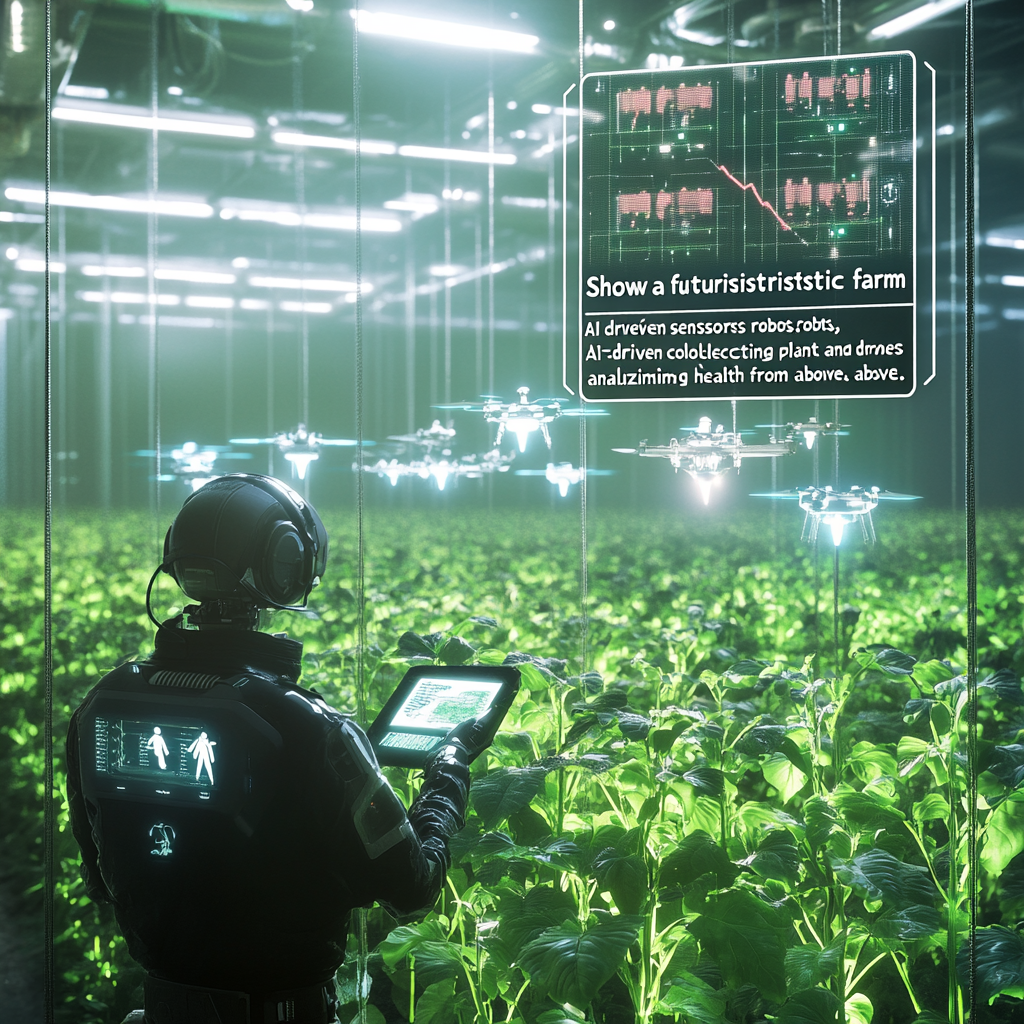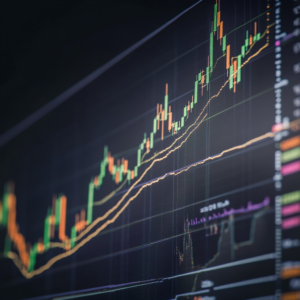
Robotic Harvest: Unleashing Plant Data Through Autonomy and AI
In the burgeoning world of agriculture, a revolution is unravelling that might just make your grandma’s old farming tales sound quaint. We’re not talking about some magic fertilizer or a weather pattern hack; no, we’re diving headfirst into the dazzling trio of autonomous robotics, sensors, and advanced computing. This robust cocktail of innovation is changing the game for plant data harvesting and might just be the secret ingredient to a thriving, modern agricultural sector.
Let’s start with the star of our tech-drama: autonomous robotics. Picture this: robots marching through vast fields, stealthily collecting data that would make even the most diligent of farmers break a sweat. These little champs—drones, unmanned ground vehicles—you name it—are equipped with an arsenal of high-tech sensors and cameras. They don’t need a map or a manual; just a green light and off they go. And what do they do? They gather impeccable data on plant health, soil conditions, and other critical parameters, all while you sip on your homegrown iced tea. Isn’t that delightful? Gone are the days of endless spreadsheet entries—a robotic entourage is now on the forefront of agricultural efficiency, offering precision that rivals a surgeon’s scalpel.
But wait, what’s a good show without an impressive supporting cast? Enter sensors—the backbone of this advanced agri-movie. These nifty gadgets bring in an avalanche of data, revealing everything from soil moisture levels to temperature and humidity. Imagine being able to detect the exact moment your plants start to stress, or when they’re craving a little extra water. Through a montage of zap and click, these sensors help farmers fine-tune their irrigation schedules, optimize fertilization efforts, and keep an eye on those pesky pests lurking near the crops.
And now, for the grand finale, we have the trump card: advanced computing. With the charm of artificial intelligence (AI) and the power of machine learning strutting onto the stage, data analysis goes from a dull chore to an electrifying performance. These technologies can process oceans of information almost instantaneously—detecting patterns, highlights, and anomalies faster than you can say “biodiversity.” They analyze images captured from up high or down low to discern whether plants are feeling under the weather or are basking in their prime. It's like having a nutrient-savvy oracle, predicting yield potential while you’re still deciding between potatoes or carrots for dinner.
But don’t just take my word for it; let’s take a sneak peek at the Advanced Plant Phenotyping Laboratory (APPL) at Oak Ridge National Laboratory. This high-tech temple of knowledge brings together robotics and imaging techniques, producing magical results. Imagine a robotic greenhouse with automated conveyors ushering plants through a series of high-tech imaging stations— like a spa day for your future crops! Multi-modal imaging techniques including dynamic chlorophyll fluorescence imaging and hyperspectral imaging are used, generating a mountain of data that gets processed by cutting-edge AI systems. The result? Detailed insights into photosynthetic activity, biomass accumulation, and much more. It’s a wonderland for researchers and farmers alike.
So, why should you care? Because this isn’t just tech for tech's sake—this is transformative stuff. Farmers have the potential to save time, resources, and maybe even a few trees while improving the accuracy of crop management practices. With the vast amounts of data being generated, researchers can unveil truths about plant physiology and interactions with the environment, paving the way for innovations in crop breeding and sustainability. That’s right, the quest for a sustainable future is getting a tech upgrade, and who doesn’t want in on that?
Now, if you’re as curious as I am, let's take a moment to appreciate some real-world applications that sprinkle a bit of magic on this modern farming tale. Drones decked out with multispectral cameras have been sent into vineyards, diligently monitoring grape health and nutrient levels, allowing winemakers to intervene with laser-like precision. Meanwhile, autonomous ground robots are shifting dirt around, collecting soil samples, and analyzing nutrient content like they’ve been doing it for centuries. The outcome? Decisions based on hard data rather than guesswork, lending a hand to farmers everywhere.
Of course, as in all great stories, there are challenges lurking in the shadows. The promise of these high-tech helpers comes with concerns like data privacy, cybersecurity, and finding a way to abide by regulations that don’t quite know how to keep up with the pace of innovation. It’s a balancing act fraught with complexity, and it’s the agricultural industry’s job to navigate this tricky terrain. There’s also an ongoing need for research to refine these technologies, making them more accessible and affordable. A jigsaw puzzle if there ever was one.
Here’s where the plot thickens further. The influence of AI isn’t just limited to farming; it’s stretching its tentacles into the realm of scientific collaboration as well. Researchers at MIT have conjured up a coalition of AI agents working in tandem to generate and evaluate research hypotheses. These intelligent agents leverage the power of knowledge graphs and multi-agent reasoning—sounds fancy, doesn’t it? This collaboration might just turbocharge scientific discoveries, potentially tearing down the walls between various fields. Who knew an AI could be such a great lab partner?
To wrap this all up in a neat digital bow, the fusion of autonomous robotics, sensors, and advanced computing is nothing short of revolutionary for plant data harvesting. It’s about more than just picking tomatoes or growing wheat; it's a continual journey toward understanding our environment, improving farming efficiency, and fostering sustainability. As we push the envelope of technological advancements, the future of agriculture looks sprightlier than ever before.
Want to stay up to date with the latest news on agricultural technologies and plant data harvesting? Subscribe to our Telegram channel: @channel_neirotoken

